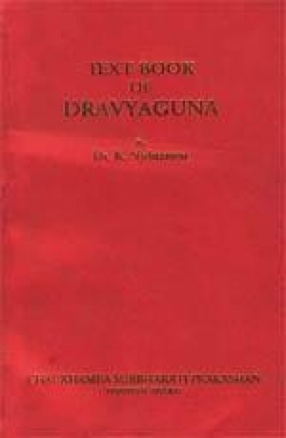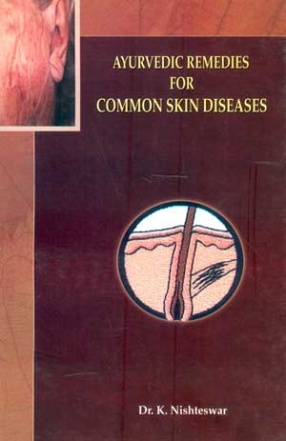
K Nishteswar

Showing all 21 books












India has a glorious tradition of health care system based on plants, which dates back to Vedic era. The Charaka Samhita and the Sushruta are the main treatises of Ayurveda. Over the following centuries, Ayurvedic practitioners developed a number of medicinal preparations and surgical procedures for the treatment of various ailments. Up to 80% of people in India use either Ayurveda or other traditional medicines. Around 1000 B.C, the knowledge of Ayurveda was ...


'Saharsayogam' is enjoying the status of Ayurvedic Practical Prescriber among Kerala Ayurvedic Physicians. The public of Kerala also keeps this book with them and considers it as the book of Ayurvedic Home Remedies. 'Sahasrayogam' means one thousand formulations, and on a rough estimate it appears that the number of formulations vary from 700 to 1200 in various versions. It also appears that some more formulations have been added periodically to ...

The main scope of Ayurveda is the preservation, maintenance and the protection of health in the healthy and, the cure of the disease in the afflicted.Ayurvedic medical system lays stress on early diagnosis of abnormal states and adaptation of curative measures. The intrinsic factors of the body which undergo morbid changes are tridoshas (Vata, Pitta, Kapha) and they participate in the evolutive process of pathogenesis of various diseases. The involvement of ...

All over the world scientists are evincing keen interest in Ayurveda and inclined to know more and more about the applied aspects in this “Life Science”. The need of the hour is to look at the various aspects of this holistic science and revalidate the principles. It should not be relegated to the state of being called an “ALTERNATIVE MEDICINE”. It deserves every praise as “PRIME MEDICAL SYSTEM” in view of the scientificity of ...





The measures comprehended by Pancha karma therapy are – Vamana, Virechana, Nirooha Vasti, Anuvasana Vasti and Sirovirechana. According Ayurvedic classics the therapeutic measures delineated under Pancha karma therapy are the bedrock of Ayurvedic approach to the treatment of disease – acute or chronic. This therapy is utilized for preservation, maintenance and conservation of health and the promotion of longevity. Charaka has emphasized the prophylactic role ...




Dravyaguna is interpreted as clinical pharmacology since the most o the Ayurvedic drugs were initially evaluated only in human beings. Seers of Ayurveda have collected the information regarding the clinical usage of several herbs from cowherds, shepherds, tribals and other forest dwellers and they never felt the necessity of evaluating their activity in animals. Dravyaguna encompasses the information of all other allied fields of pharmacology like: Namarupa ...

Diabetes is a common endocrinal disorder, now identified as a metabolic syndrome, affecting over 100 million people worldwide. The World Health Organisation and International Diabetes Federation have predicted an epidemic of Diabetes in India by the year 2025. The prevalence of Type II Diabetes or NIDDM is growing at a very fast rate in urban and semi-urban population. Diabetes mellitus is a condition characterized by chronic elevation of blood glucose levels. ...

Prasna-Vikalpa written and compiled by Dr. Sunil Kumar Joshi is not only a collection of multiple choice questions, besides this it contains other useful informations about the Ayurveda. This book is written primarily for the students of Ayurveda who want to appear in post-graduate and other competitive examinations. In present book, the entire spectrum of Ayurveda i.e. Maulika siddhanta, Rasa-sastra, Dravyaguna, Kaumarabrtya, prasuti and Stri-roga, Kaya-cikitsa, ...

It is heartening to find a book on Ayurvedic Pharmacology expositioning the role of the basic concepts-Rasdi in drug action. The knowledge of concepts and their application in sine qua non for proper understanding of the phases / levels of drug action. The book "Basic Concepts of Ayurvedic Pharmacology" authored by K. Nishteswar covers basic principles of drug action, drug evaluation and the importance of Rasadi in understanding Ayurvedic Pharmacology. ...

In this book the subject matter is discussed in three sections. Section-1 contains Single and Simple Herbal Recipes for Common Disorders; Section-2 contains Research Profiles of Indian Herbs and Section-3 contains Essential Ayurvedic Formulations for Common Diseases. In Annexure list of Raw Drugs in Demand for Manufacture of Ayurvedic Shastriya (Generic) For-mulations, List of Herbs in Demand for Manufacture of Patent Medicine, List of Medicinal Plants Suggested ...
